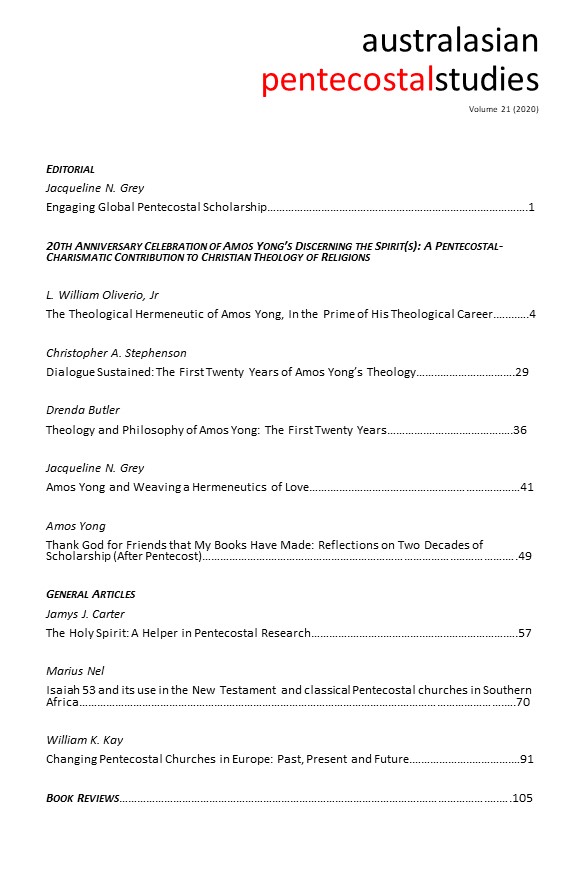Amos Yong and Weaving a Hermeneutics of Love
Abstract
It is a delight to reflect upon the theological contribution of Amos Yong on the 20th anniversary of his publication Discerning the Spirit(s). Yong’s work has greatly influenced me, particularly in my continuing work on pentecostal hermeneutics. This article is an exploration, inspired by the work of Amos Yong, on the intersections between love, the Holy Spirit, and biblical hermeneutics. It is essentially an interweaving of ideas inspired by the work of Amos Yong. While the corpus of Yong’s work is too large to engage with, this exploration takes as a starting point Yong’s Spirit of Love. It then weaves together some threads from other Pentecostal scholars who also explore desiring God and the affections. It then adds threads from biblical hermeneutics, looking at Lee Roy Martin’s “affective approach” to reading the biblical text while interweaving those ideas with some of Yong’s earlier work. It finally interlocks these ideas to weave a “hermeneutics of love,” based on Yong’s reading of the parable of the Good Samaritan, to demonstrate how a reading of biblical text can move us towards the telos of love for God and neighbor.
Downloads
Published
How to Cite
Issue
Section
License
Authors who publish with this journal agree to the following terms:
- Authors retain copyright and grant the journal right of first publication with the work simultaneously licensed under a Creative Commons Attribution License that allows others to share the work with an acknowledgement of the work's authorship and initial publication in this journal
- Authors are able to enter into separate, additional contractual arrangements for the non-exclusive distribution of the journal's published version of the work (e.g., post it to an institutional repository or publish it in a book), with an acknowledgement of its initial publication in this journal.
- Authors are permitted and encouraged to post their work online (e.g., in institutional repositories or on their website) prior to and during the submission process, as it can lead to productive exchanges, as well as earlier and greater citation of published work (See The Effect of Open Access).


